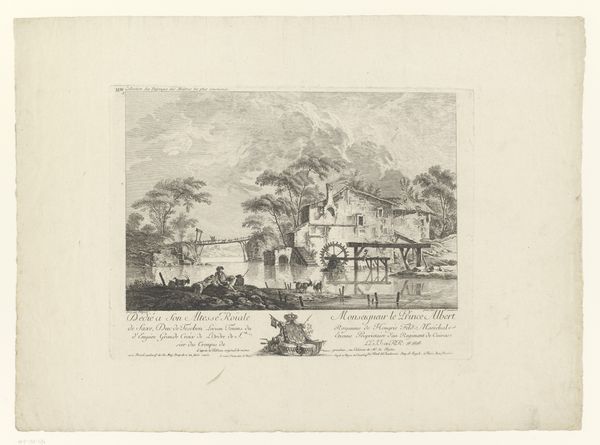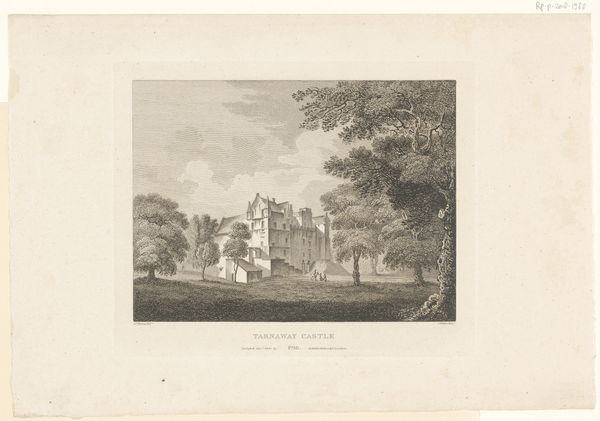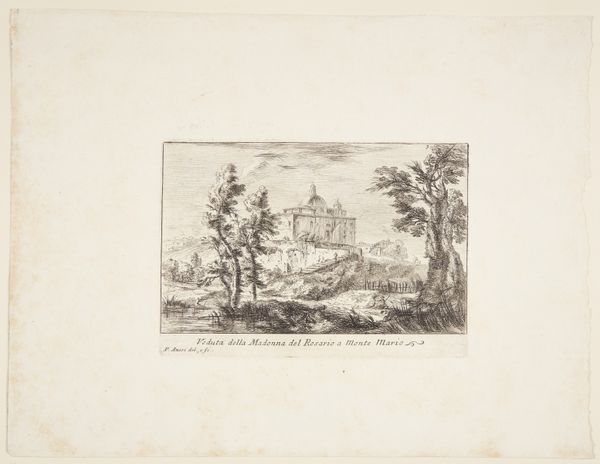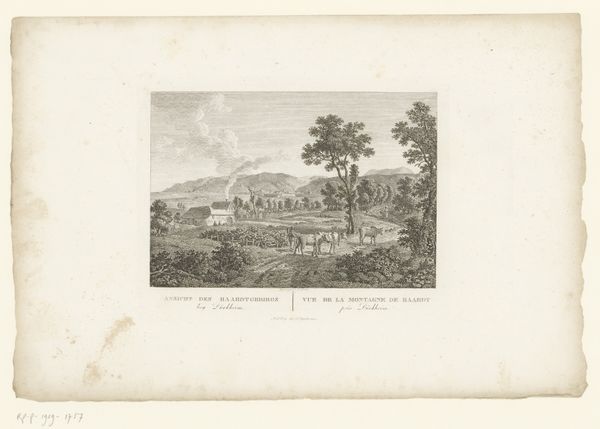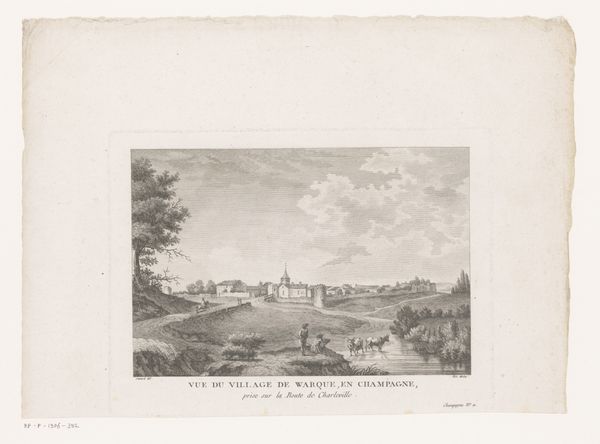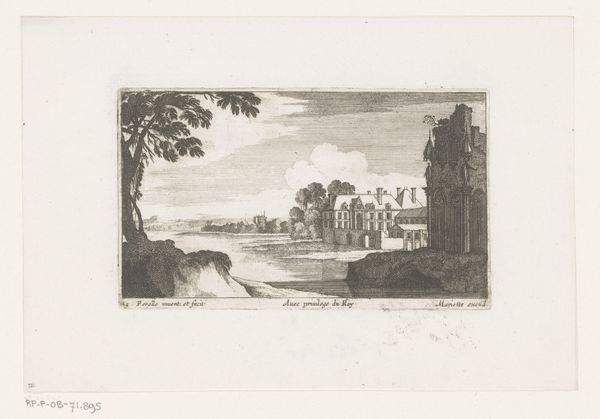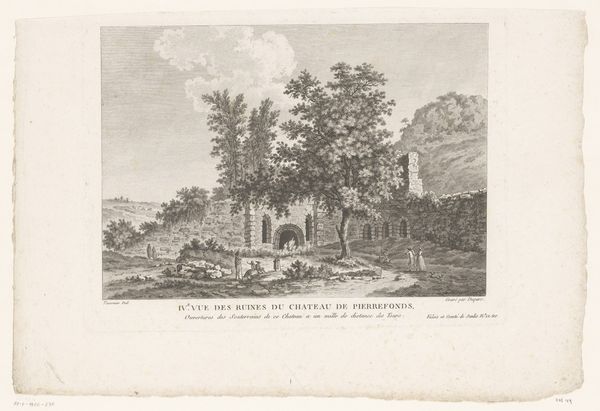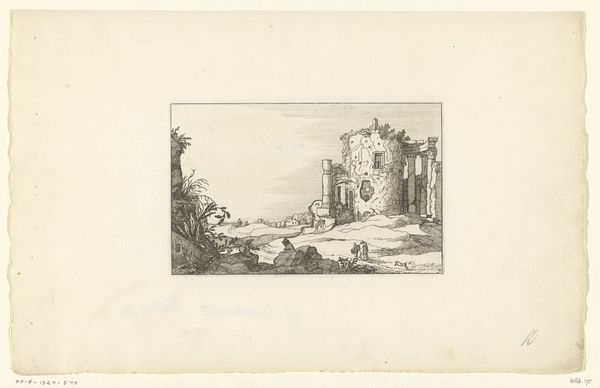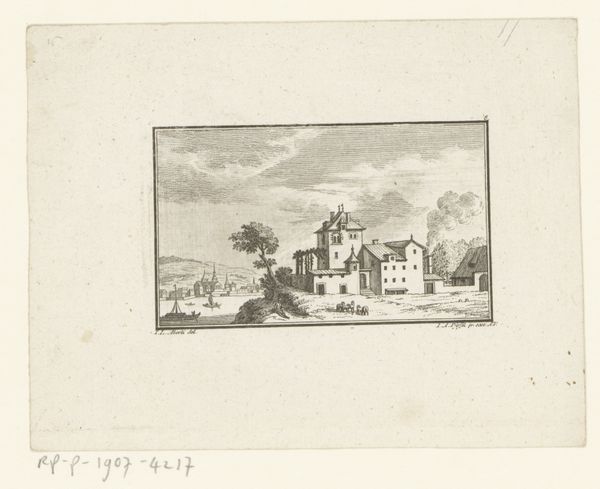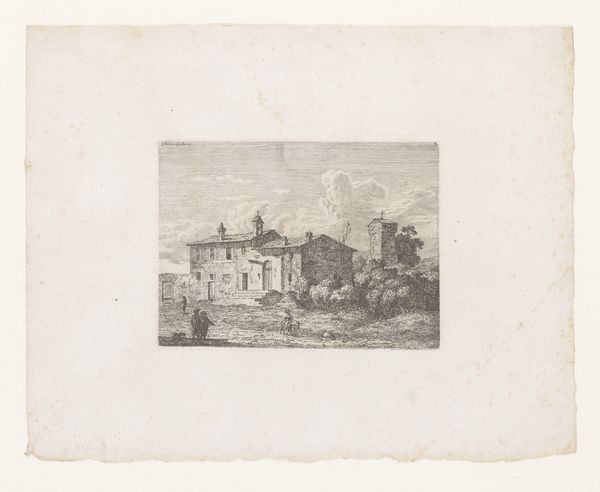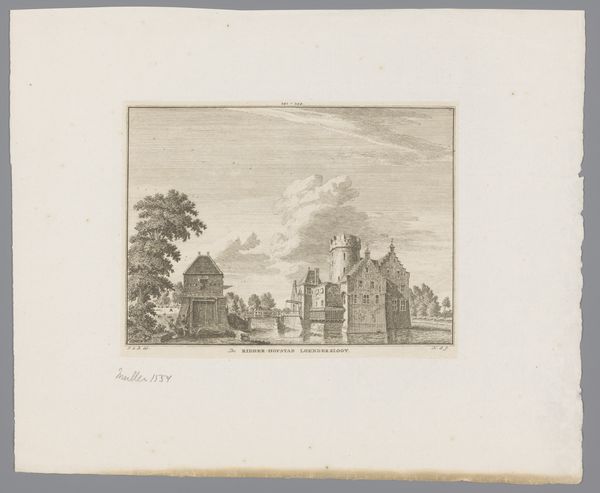
Dimensions: height 299 mm, width 396 mm
Copyright: Rijks Museum: Open Domain
Editor: Here we have Ferdinand Landerer's "Landschap met figuren bij huizen en een poort aan een oever," created sometime between 1763 and 1795. It’s an engraving, and I'm struck by the contrast between the quiet domesticity of the buildings and the rather melancholic figure standing alone on the right. How do you interpret the symbolism at play here? Curator: It’s a compelling question. What immediately strikes me are the archetypes that Landerer subtly deploys. The image seems to tap into a collective memory of simpler times. The houses by the water evoke ideas of retreat, of sanctuary. Notice how the artist guides our eye, using the darker tones of the foreground to frame the brighter, more ethereal scene beyond. Does this visual cue suggest something to you? Editor: Perhaps that there's something idealised about that 'simpler time,' a sense of distance? Curator: Precisely. And what of the figure, so self-contained and solitary? Think of the Romantic era, gaining momentum during Landerer’s time – figures in nature often represent the individual's contemplation of their place in a vast, sublime world. Do you think that holds true in this engraving? Editor: I do, actually. Now that I look at him, he appears not lonely, but rather, contemplative in his solitude. Curator: Yes, it’s as though Landerer captures a turning point, where the communal values of the village meet the budding, individualistic spirit of the late 18th century. A time of profound change, symbolized through carefully rendered imagery. Editor: That really gives me a new appreciation for this piece; I'd been missing all those subtle nuances. Curator: Indeed, the power of imagery is in its layered ability to represent eras long after they are past.
Comments
No comments
Be the first to comment and join the conversation on the ultimate creative platform.
